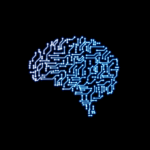When people talk about AI, they often jump straight to complex use cases. Intelligent agents. Autonomous workflows. Personalisation at scale. But in the rush to ‘go big’, they’re missing out on one of the simplest, most valuable AI applications available right now.
RAG (Retrieval-Augmented Generation) isn’t flashy. It probably won’t get you a standing ovation at the next company meeting. But if you’re an ops leader trying to free up time, support your team and deliver early, tangible results with AI – RAG might be your new best friend.
What exactly is RAG?
At its core, RAG combines two things:
- An LLM (Large Language Model) capable of understanding and generating human-like language.
- A retrieval system that pulls in relevant documents or snippets from a curated knowledge base.
The result? A powerful AI “answer bot” that doesn’t just respond based on its generic training, but one that can ground its answers in your company’s actual policies, SOPs, handbooks, playbooks, or documentation.
Ask a RAG-powered tool how your company’s expense policy works. It won’t give you a generic answer based on internet training. It’ll reference your actual handbook, summarise it clearly, and even quote the relevant section.
Why does this matter?
Most internal knowledge lives in chaos.
It’s spread across PDFs, outdated intranet pages, Google Drive folders, wikis that no one reads, or lives only in someone’s head. And even when it is written down, it’s often hard to find, and harder to read.
So people ask each other. They guess. Or they give up entirely.
RAG solves that. It gives every employee a simple interface to ask plain-English questions about how things work, and get useful, trustworthy, sourced answers in seconds. No Slack threads. No waiting. No friction.
And that means less interruption, fewer mistakes, and faster execution.
RAG use cases that work right now
Let’s get specific. Here’s where I’ve seen RAG implementations already making an impact:
- HR & Policy Support
Team members can ask questions like “How many days off do I get for a bereavement?” or “What’s the process for remote work approval?” and get accurate answers with links to official policy documents. - Operations & Compliance
Frontline managers can query processes, check compliance steps, or clarify responsibilities without sifting through long manuals. - Customer Support Enablement
Support teams can search product documentation faster. New hires can get up to speed quicker. Everyone wastes less time searching for answers. - Internal Tools & Training
Instead of trawling through onboarding decks or knowledge bases, staff ask the AI directly – “What’s the naming convention for files again?” or “Where do I log bugs?”
None of these are revolutionary, but they’re all valuable. They save time. They reduce friction. And they deliver something that’s often hard to get: confidence and momentum.
Getting started is easier than you think
This isn’t a multi-million dollar implementation. RAG setups can be surprisingly lean. All you need is:
- A set of curated internal documents.
- An LLM to do the language work.
- A system to fetch and pass relevant documents when a question is asked
Plenty of tools already support this pattern, and if you’ve got someone technical on the team (or a good partner), it can be live in weeks not months. The hardest part is often just picking the content. But even that becomes easier when you scope tightly and focus on high-friction areas (HR, operations, onboarding, etc.). You could even ask the AI to help you curate your content on specific criteria.
What makes this a good move now?
RAG isn’t the future, it’s something that can move the needle now. And more importantly, it unlocks readiness for what comes next.
As automation and AI start to scale across your business, knowledge access becomes a bottleneck. People need context to make decisions. AI systems need grounding to operate safely. RAG provides that layer of connective tissue between information and action.
It’s also politically safe. You’re not replacing people. You’re supporting them. Giving teams a better way to access what’s already there. That’s hard to argue with.
Don’t overthink it
RAG isn’t a moonshot. It’s a margin booster. A time saver. A simple, dependable way to introduce AI that your team will actually use. And the best part? You don’t need to treat this as a separate workstream. In fact, the best results come when RAG is introduced alongside your broader automation efforts.
Start using RAG in parallel with simple automations, and you’ll notice something: your team will begin thinking differently. They’ll start identifying bottlenecks. They’ll become more aware of the processes they rely on. They’ll spot where things break down, and where AI can help.
And as your automation programme evolves, RAG can evolve with it – growing more “agentic”, more proactive, and more powerful.
Simple AI. Real value. That’s what low-hanging fruit should look like.







